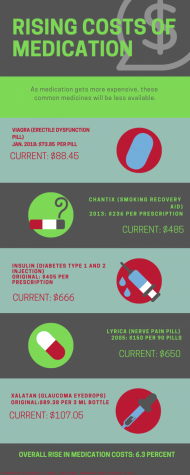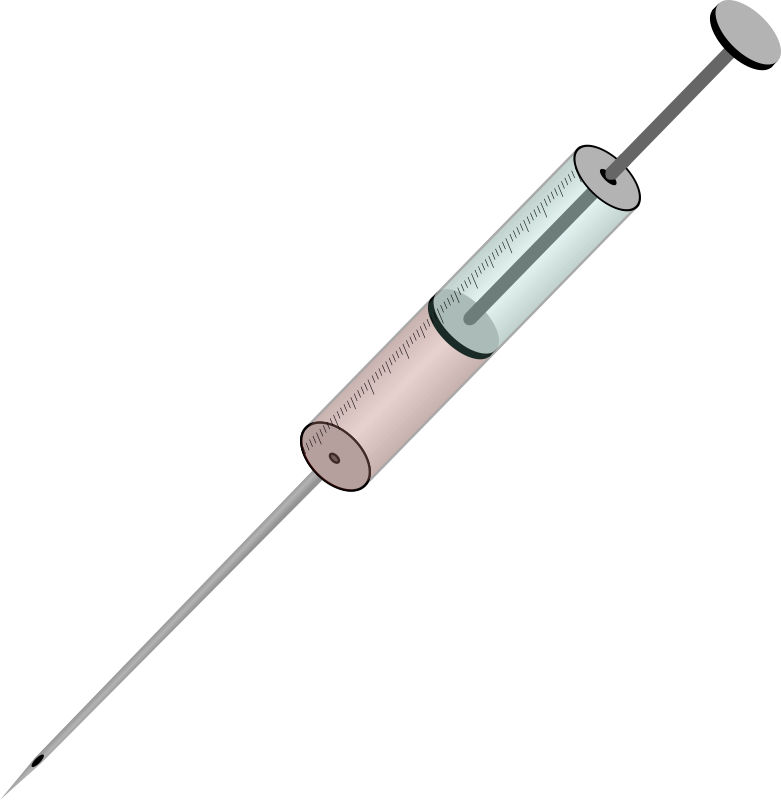Paying for my life: Looking at the rising costs of medication
My thoughts on the rapidly increasing prices of prescription drugs
March 14, 2019
I’m part of the 60 percent of the world that has a food allergy of some type. For me, it’s nuts. For others, it could be eggs, milk, wheat or soy. There are even some less common allergies where people are allergic to nearly all fruits or even sugar. No matter the allergy, every meal is a constant patrol of ingredients, searching for the big red flag that screams “Don’t eat me.” Although, a few will slip through despite scrutinizing every food there is. That’s when 60 percent of us have to fear for our lives.
My worst case scenario: anaphylactic shock. In short, the allergic reaction causes my lungs to close in on themselves, making it harder to breathe until I eventually die. Fortunately, there is a temporary cure —the medicine itself is called epinephrine, and the largest marketer of it is Mylan, a company that creates Epipens. All I have to do is jab the pen into my thigh and a needle injects medicine to keep me alive long enough for a ride to the hospital for further treatment. Until last year, that cure-all medicine injector was only produced by one large company, which makes millions off the people who need them to survive.
The inherent problem in having one company dominate an entire market is that they can control their prices: because they are the only popular seller, everybody who needs this specific drug has to pay for that one brand. Therefore, they can rise the price as much as they like without fear of competition. In 2013, not counting insurance coverage, the price of each pen was $158. Now, the price is $322 a pen, more than double the original price. Since then, interest has increased in off-brand pens like the Impax auto-injector, much cheaper at about $55 a pen. So I have an alternative, thankfully. For other medications controlled by one brand-name company, however, high prices could be the only option consumers have left.
Take diabetes. For people with both Type 1 and Type 2 diabetes, insulin shots keep them from dangerously high blood sugar levels, which could result in death. Yet because three main companies overwhelm the market — Sanofi, Novo Nordisk and Eli Lilly — the prices have risen dramatically in just two years, from $405 to $666 a month. Even worse, these three companies can raise their prices as much as raise their prices as much as they like because none of them interfere with each other, as Sanofi is based in France, Novo Nordisk in Denmark and Eli Lilly in the United States. If you’re someone who can afford the skyrocketing prices or have a job with decent health benefits, consider yourself lucky. The prospect for those who can’t find the money and don’t have access to benefits through their employer, however, is grave.

In order to save money when his family was going through financial troubles, an Utah teenager with Type One diabetes cut back on his shot intake to make his insulin last longer — such a selfless act, it’s nearly insane. He was willing to risk dying from not getting enough insulin to save money on his lifesaving injections. He’s one of the lucky ones. Other people who cut back to spend less have died because they couldn’t afford their medicine.
It’s outrageous how large companies can dominate the market and effectively dictate who gets their medicine and who doesn’t. They don’t care about the well-being of patients. If they prioritized human health, they would also strive to make the medicine more readily available in addition to maintaining research and development for better medication. Instead, they’ve gone in the opposite direction, raising prices drastically, purely for corporate gain. These near-monopolies have destroyed our ability to access better health care — by forcing patients to spend excessive amounts of money on the things that keep us alive.
Perhaps America’s lack of free healthcare has something to do with it. The problem with letting medicine corporations operate like corporate businesses is that pharmaceutical companies can take advantage of that fact. They get to make millions off the people who desperately need what they’re selling because they’re the only ones who carry it.
If we consider the case of the teen from Utah, the bottom line is that’s not the way it should be. While money is necessary to survive in this world, so is being healthy. Money is no good if you have no life to spend it on. In all honesty, health should be a priority in these cases. Of course, if there is a cheaper, accessible alternative to your medicine, by all means, use it. But for those who can’t find one, it’ll be harder to keep living with the conditions they are living with.
The devastating truth is that many times we end up losing that battle. For diabetics, those high blood sugar levels set off a chain reaction that leads to deadly chemicals being created in their body. For people with allergies, like myself, one bite of food could quickly deprive me of the air I need to live. For those who require it, medicine is essential to function normally. Everyone — no matter the socioeconomic status — everyone should be able to easily afford the medication they need to keep them alive.
So in my case, I’m fine with having my condition. I’m fine with needing to patrol myself to stay safe. I’m fine with living with death right around the corner. My worst fear would be that I died because I didn’t have enough money to live.


















